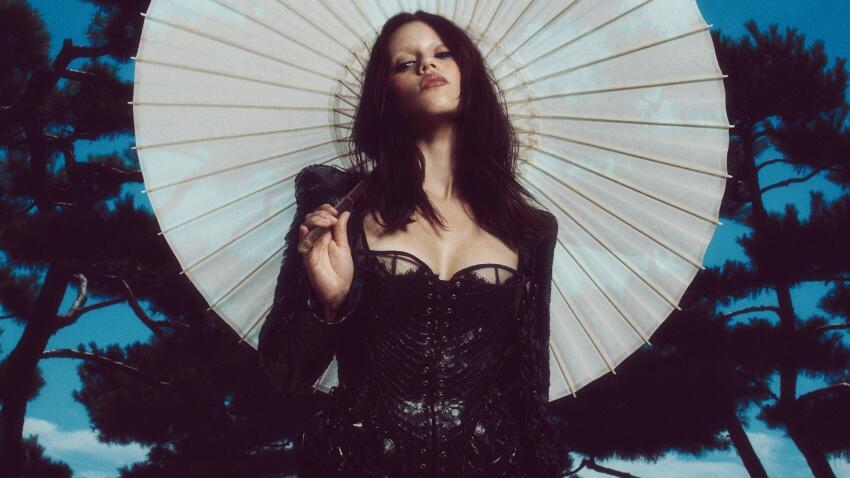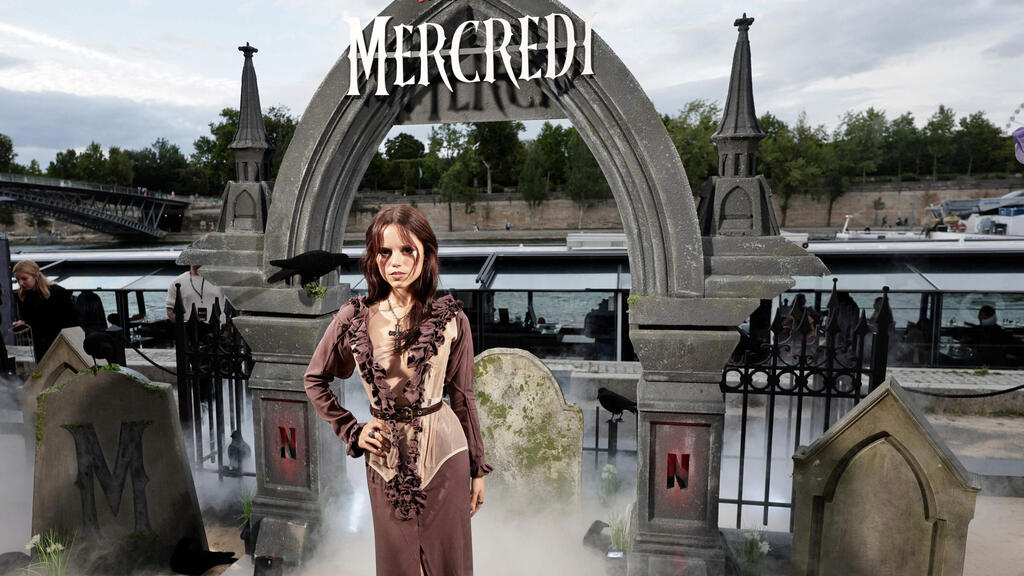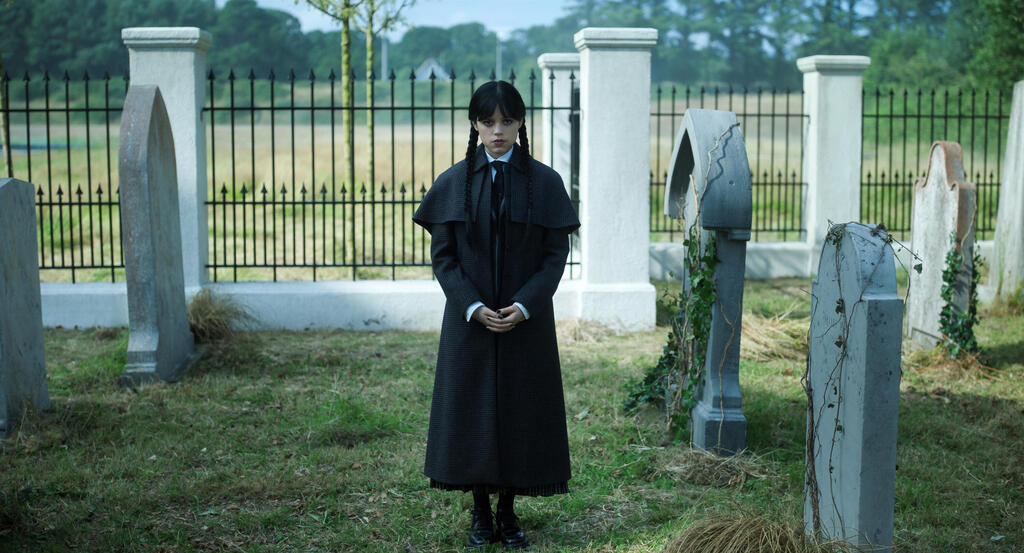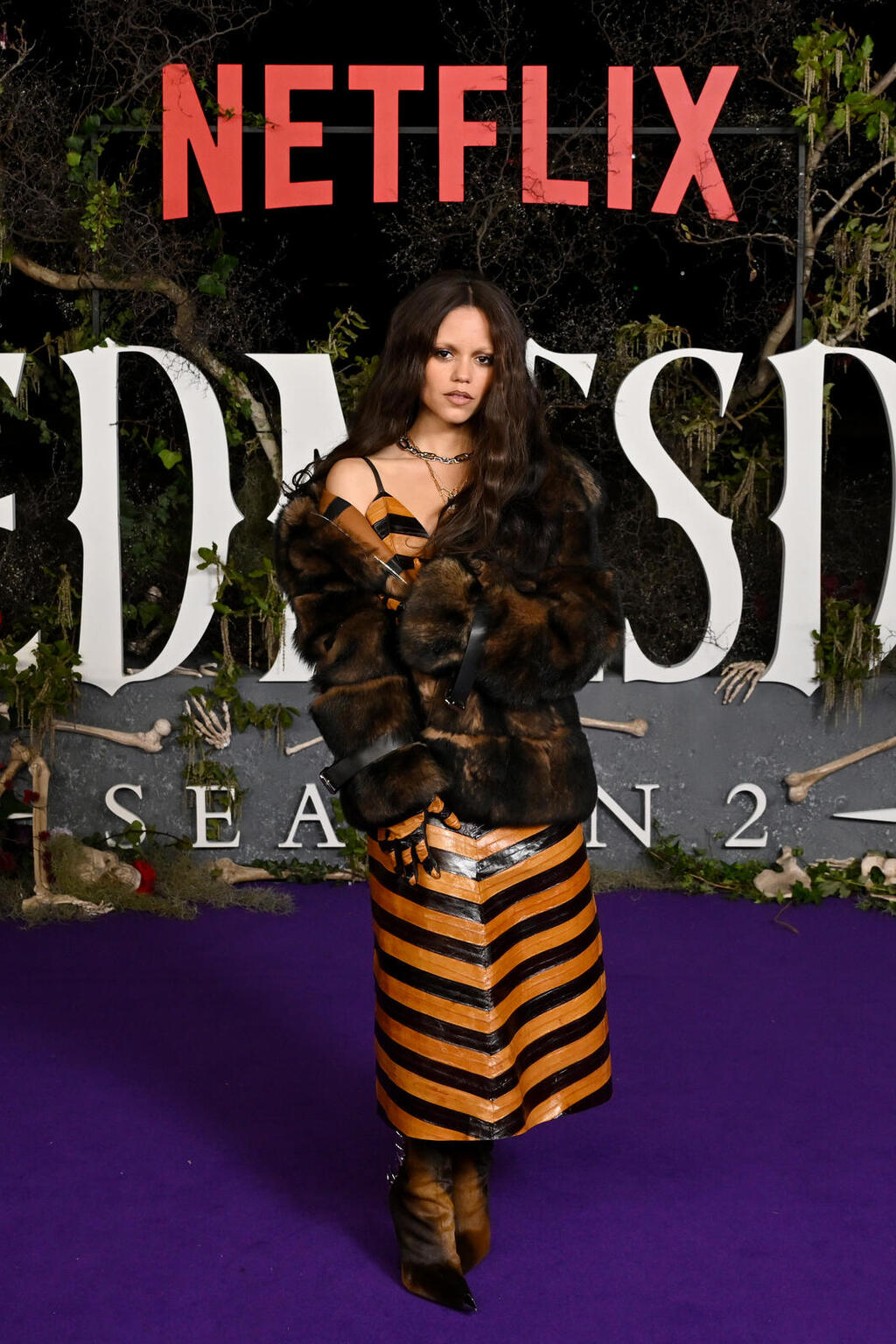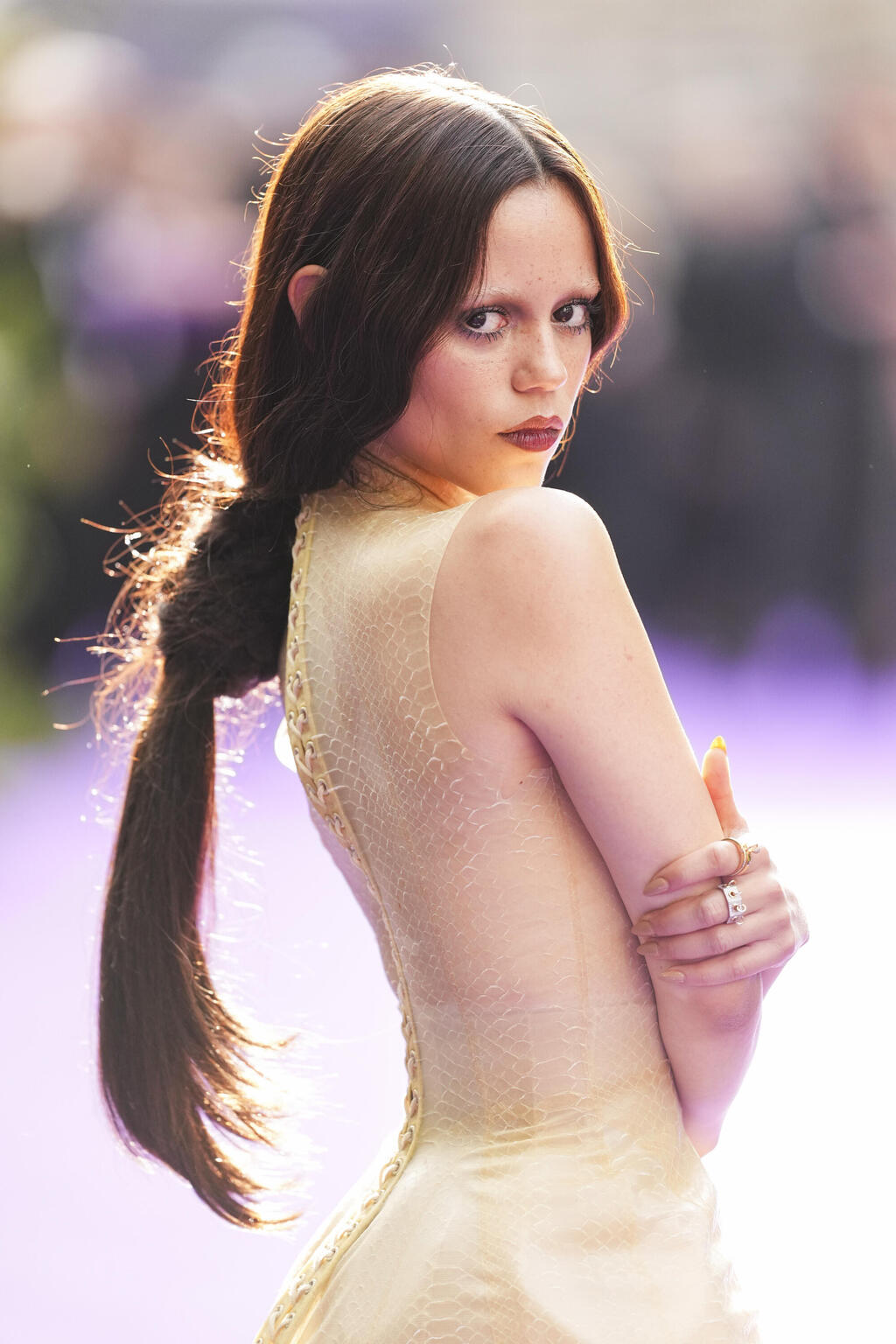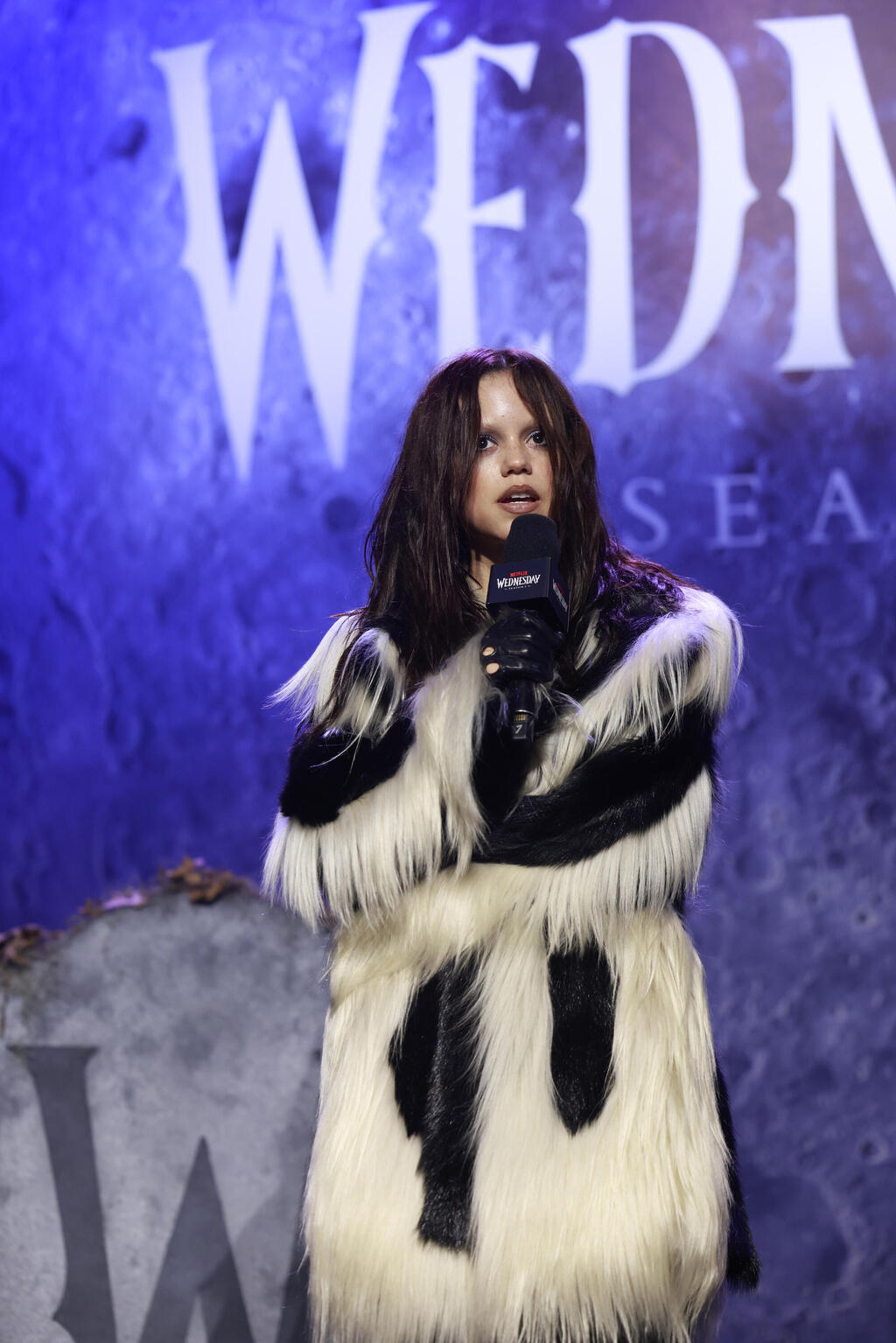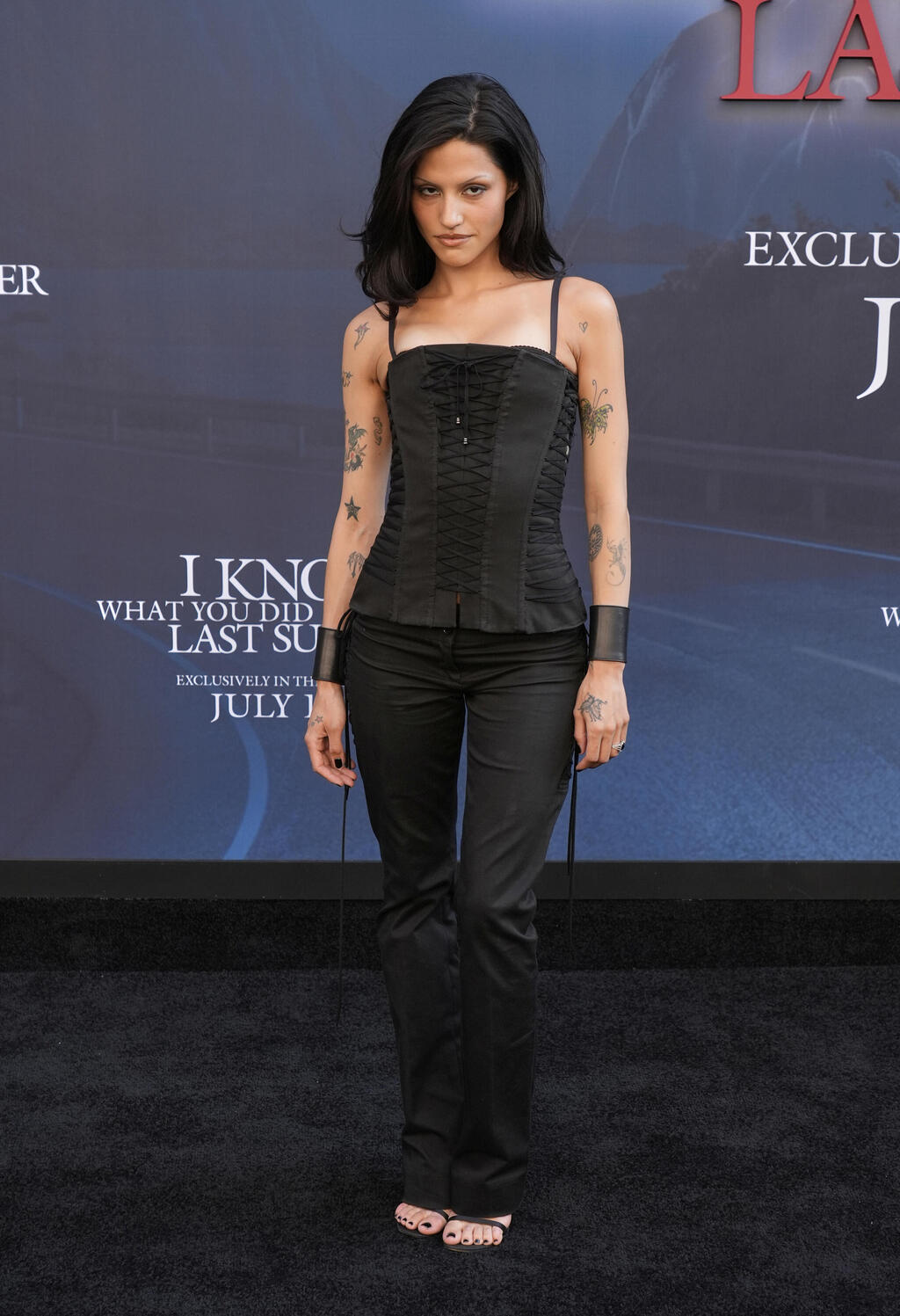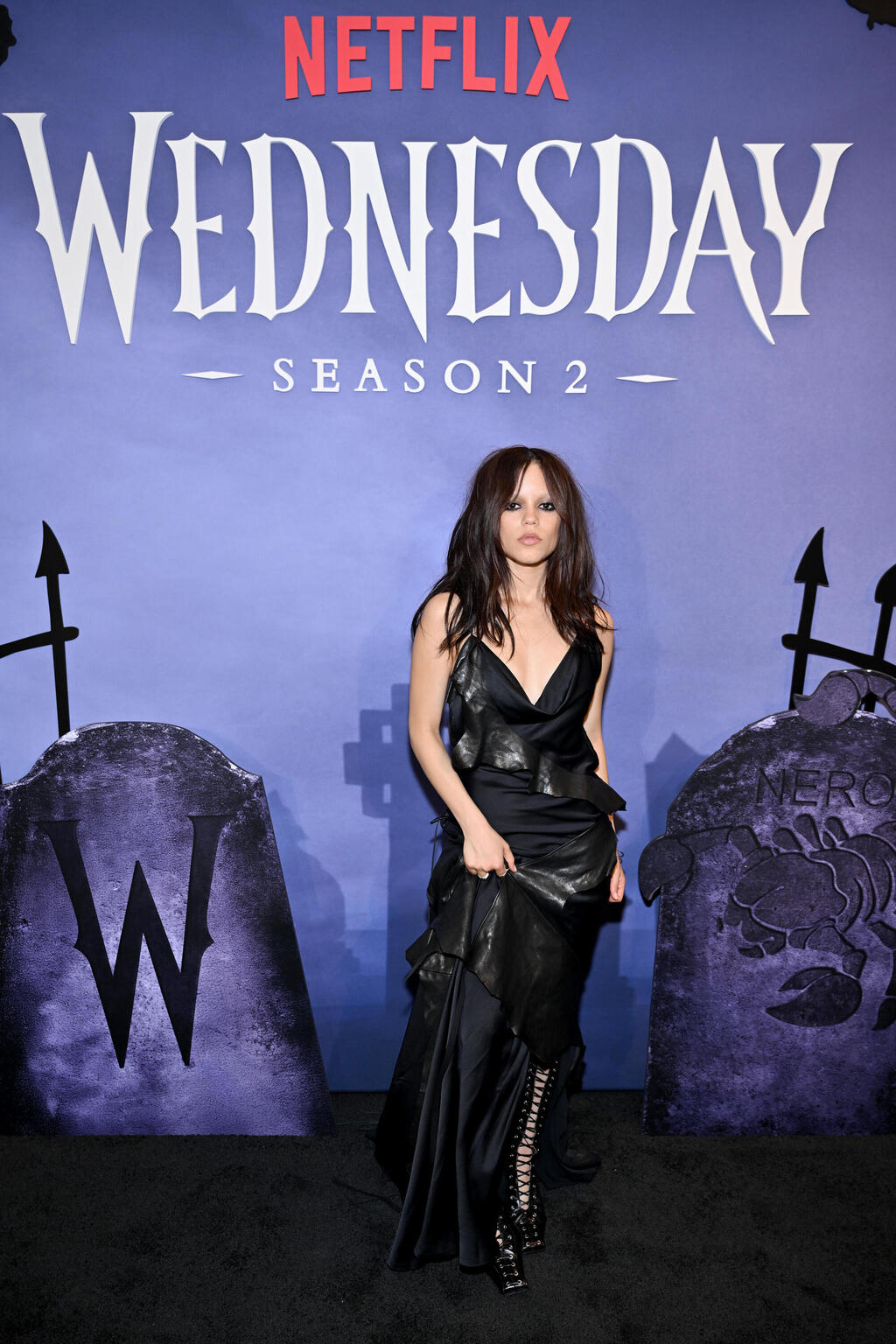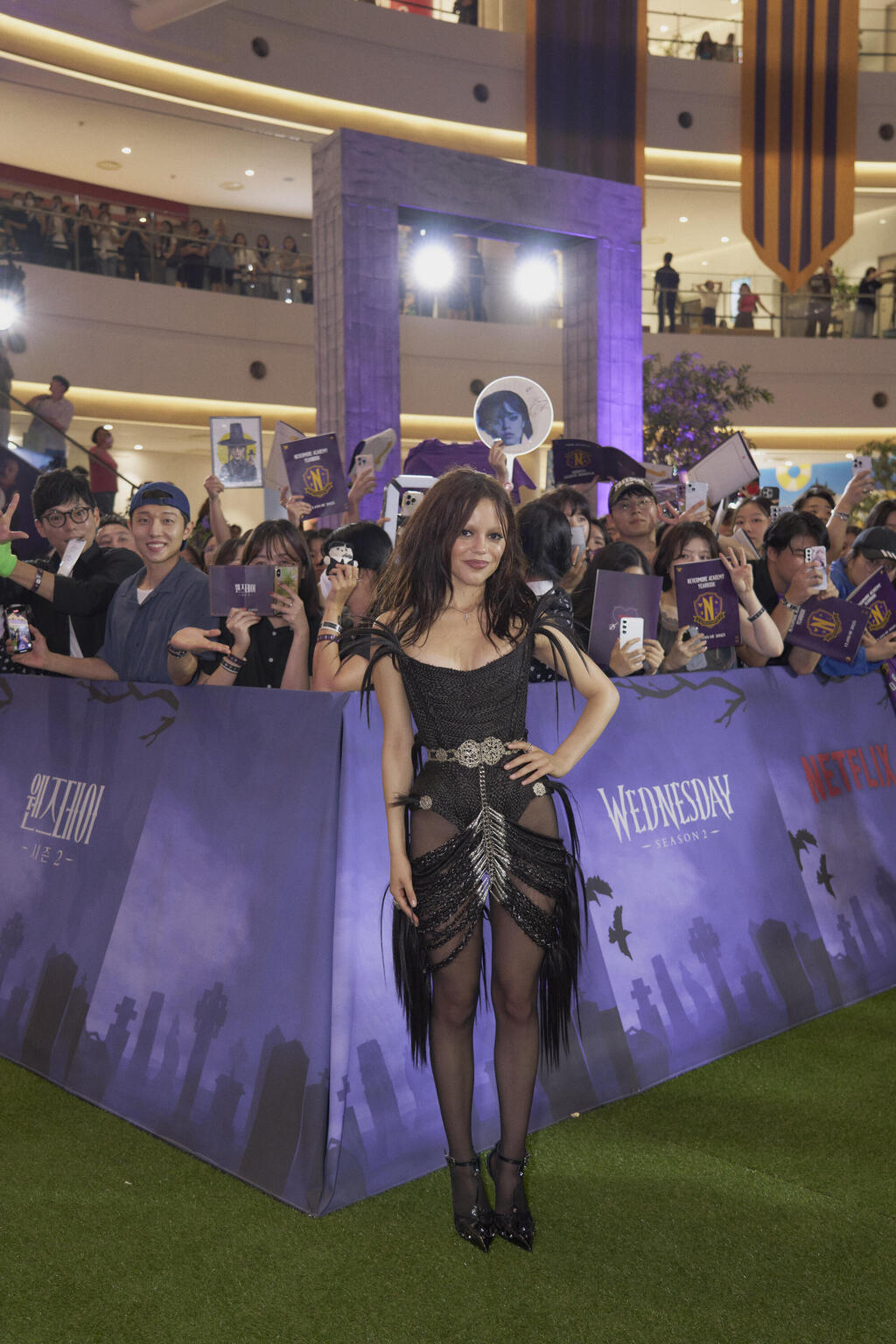Jenna Ortega recently wrapped her promotional appearances for the second season of Netflix’s hit series Wednesday, delivering some of her most spellbinding outfits in recent months. For the Australian premiere, Ortega appeared in a pinstriped Fendi dress paired with a matching fur coat. Thin eyebrows and layered chains completed a rough-edged look that perfectly captured the gothic essence of her character.
Weeks earlier, at the New York premiere, she wore a silk slip dress with cut-out leather straps designed by Belgian fashion house Ann Demeulemeester. Knee-high corset-style boots with squared toes gave her outfit a dramatic, edgy sensuality. Her black hair, smoky eye makeup and lightened brows reinforced the gothic-romantic aesthetic of her appearance.
Three years after her breakout role, Wednesday Adams returns to screens as if emerging from her long absence like a creature rising from the grave. While the second season’s storyline may stumble compared with the first, for millions of gothic-leaning teens, the series provides a fashion representation that often remains absent from mainstream media.
The phenomenon goes far beyond television. Social media, particularly TikTok, is filled with teens emulating Wednesday’s look: sleek, center-parted hair, tight black dresses and smudged eye makeup that suggests a night of unruly mascara. Paradoxically, everyone wants to dress like the “weird girl” in class.
“I think gothic fashion gives a voice to people who feel different or misunderstood, and Wednesday is definitely one of those characters,” Ortega said in an interview. “Her gothic style fits her world—an elegant, sharp combination. Wearing these clothes helps me get into her mindset and feel her vibe. I love that Wednesday’s style is dark and mysterious but also expresses her personality: it’s not just clothing—it’s a way of showing who she is inside.”
Wednesday’s gothic look is not just a fleeting trend. Rooted in the gothic subculture of the 1980s, it draws on medieval architecture and dark romantic literature. Designer Rick Owens, dubbed the “god of darkness” in fashion, has driven a recent revival, and elements of gothic style also appear in mainstream fashion collections. For instance, Alexander McQueen’s new fall campaign nods to the current gothic influence.
11 View gallery
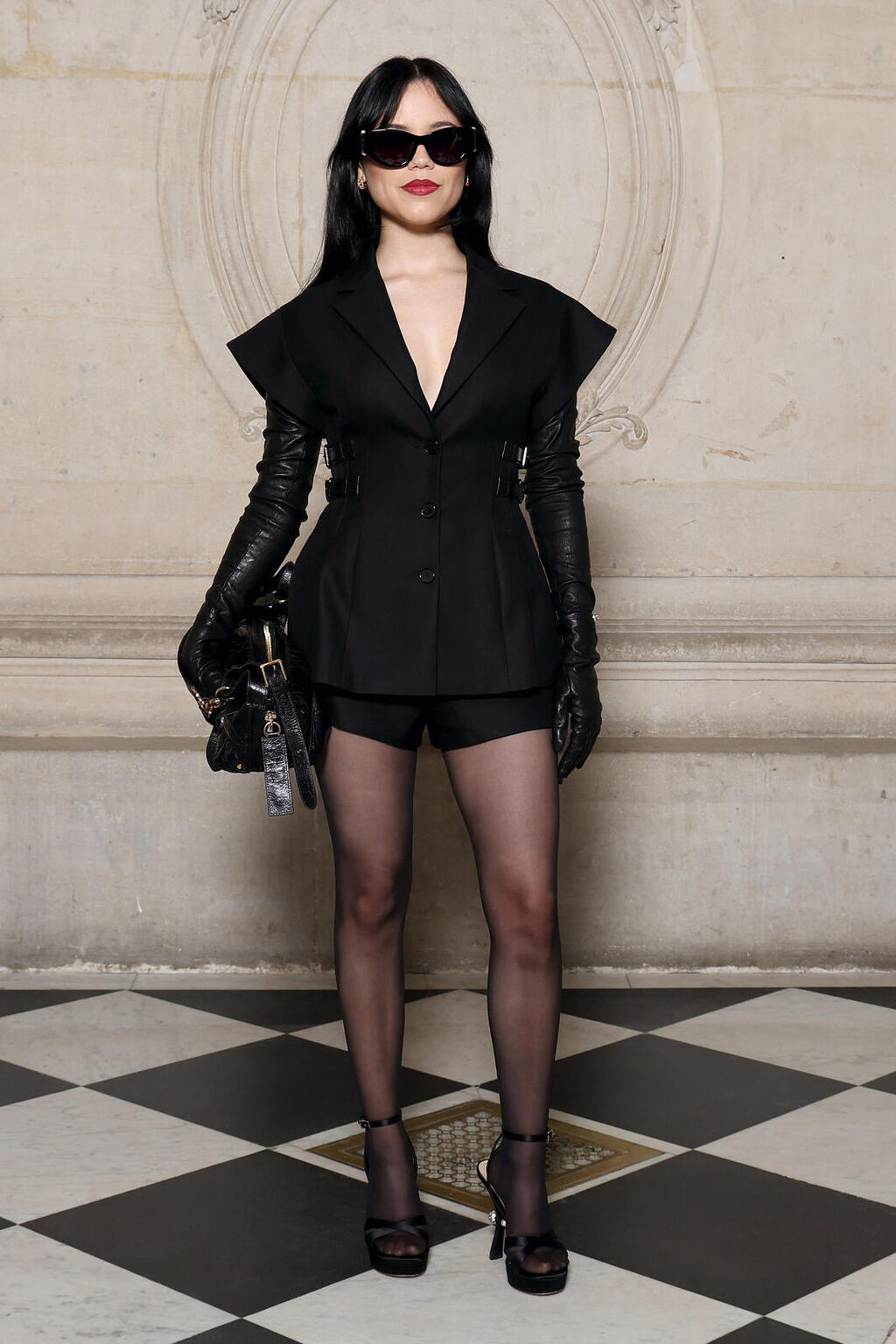

Ortega at Dior’s Spring-Summer 2025 haute couture show
(Photo: Pascal Le Segretain/Getty Images for Christian Dior)
Ortega’s premiere outfits mix dark and romantic themes: a deconstructed lingerie-style dress by Elena Walz for the Seth Meyers show, and a chocolate-colored dress with corset overlay and ghostly silhouette by Andreas Kronthaler for Vivienne Westwood at the Paris premiere. A large cross necklace completed the gothic effect.
Her stylist, Enrique Melendez, assembles wardrobes featuring black dresses and skirts, sheer fabrics, latex and vintage touches, reflecting the gothic aesthetic. Examples include a high-necked latex gown by Saudi haute couture designer Mohammed Ashi, worn at the UK premiere, combining a corset with a close-fitting latex top and fishtail skirt with frayed edges.
Gothic fashion combines dark, dramatic and mystical elements originating from the European subculture of the ’80s and ’90s. Key features include Victorian and Elizabethan influences, predominantly black clothing sometimes accented with deep red, purple, or navy, high collars, puffed sleeves, long skirts and accessories such as rings with mystical symbols, crosses and silver jewelry.
Though traditionally a niche trend, gothic elements have entered mainstream collections by designers like Ann Demeulemeester, Alexander McQueen, Dior and Chanel. Over the years, many music icons—from Madonna to ’80s New Romantic bands to Suzi Su of Suzi and the Banshees—have embraced gothic aesthetics, blending rebellion and anti-mainstream sentiment with fashion.
One prominent contemporary example is Italian “It girl” Gabbriette, who appeared in a gothic outfit for the U.S. premiere of I Know What You Did Last Summer, recalling Jennifer Love Hewitt’s iconic 1998 look.
But gothic fashion is more than clothing. It is a subculture encompassing ideology, music and leisure activities, as cultural scholar Dick Hebdige explains in Subculture: The Meaning of Style. Anthropologist Agnes Jasper of the University of Amsterdam notes in her study of the Dutch gothic scene that participants often resist being labeled “goth” to maintain authenticity and counter mainstream adoption.
This tension between subculture and mainstream is visible in fashion. Global brands seek to commercialize gothic style, creating accessible trends for young consumers, yet authentic followers emphasize individuality and internal experience over external conformity. Fashion magazines have increasingly spotlighted gothic style; Elle recently named it the “hot trend for fall 2025,” spurred in part by Ortega’s influence.
The return of Wednesday also affects retail. Miss Sunshine, a boutique in Tel Aviv’s Dizengoff Center specializing in gothic clothing, Japanese streetwear and alternative fashion, has seen a surge in popularity. Owner Alva Shafik notes, “As brands associated with gothic fashion expand internationally, the trend grows. Our store has become darker over the years.”
When asked about sales, she explained that while early merchandise tied to Wednesday’s first season sold moderately, teens now seek a darker gothic aesthetic with layered clothing, Y2K influences and Lolita-inspired gothic styles. “It’s no longer just the niche fans wearing this. Younger teens, ages 15–20, are embracing extremes of the style, mixing trends we never imagined. They’re confident, experimental and it’s becoming very popular in Israel.”
Shafik observes that the traditional punk-goth style is giving way to a more classic gothic look—dark but softened for today’s era, reflecting a generation navigating complex political and social realities. “Many girls used to shop for skull prints but were told no by their parents. Now, gothic fashion is on the rise among the new generation,” she said.




